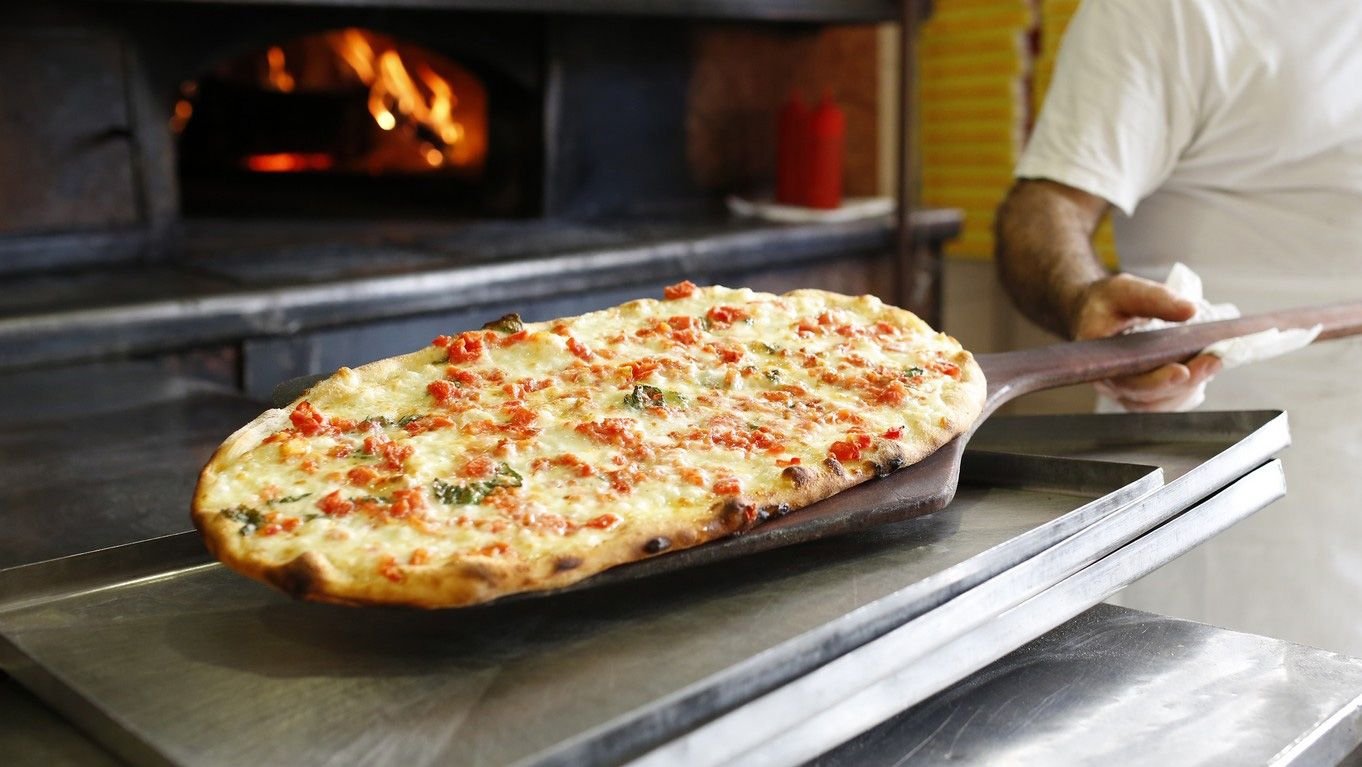Pizza al Taglio, a beloved street food in Italy, particularly in Rome, offers a distinct and delightful take on the traditional pizza experience. Known for its rectangular shape, variety of toppings, and convenience, Pizza al Taglio has become an integral part of Italian culinary culture. This article explores the description, preparation, and cultural significance of Pizza al Taglio.

Description of Pizza al Taglio
Shape and Presentation
Pizza al Taglio, meaning “pizza by the cut,” is typically baked in large rectangular trays and sold in slices or by weight. Unlike the round pizzas commonly found in pizzerias, this rectangular shape allows for a more efficient and flexible distribution of toppings and portions.
Dough and Crust
The dough for Pizza al Taglio is distinct from other pizza types. It has a higher hydration level, often around 70-80%, resulting in a light, airy texture with a crispy exterior. This high hydration dough is key to achieving the characteristic bubbles and open crumb structure in the crust. Olive oil is often added to the dough, contributing to its flavor and crispy texture.
Toppings
One of the standout features of Pizza al Taglio is the wide variety of toppings available. Traditional toppings include classics like tomatoes, mozzarella, and basil, but Pizza al Taglio also offers more adventurous options such as zucchini blossoms, truffle oil, potatoes, and even seafood. The toppings are spread evenly across the pizza, ensuring that each bite is packed with flavor.
Baking Process
Pizza al Taglio is typically baked in electric ovens at moderate temperatures, around 250°C to 300°C (482°F to 572°F), for about 10-15 minutes. This longer baking time, compared to Neapolitan pizza, contributes to its crispy texture and ensures that the toppings are cooked to perfection.
Cultural Significance of Pizza al Taglio
Street Food Tradition
Pizza al Taglio is a staple of the Italian street food scene, especially in Rome. Its convenience and versatility make it a popular choice for locals and tourists alike. Sold by the slice or weight, it offers a quick and affordable meal that can be enjoyed on the go, making it a perfect option for busy city life.
Culinary Innovation
The versatility of Pizza al Taglio allows for endless creativity in topping combinations. This innovation is reflective of Italy’s rich culinary tradition, where regional and seasonal ingredients are celebrated. Pizzerias often experiment with new flavors and ingredients, keeping the tradition of Pizza al Taglio dynamic and evolving.
Social and Community Aspect
Pizza al Taglio plays a significant role in the social and community fabric of Italian life. Pizzerias and bakeries serving Pizza al Taglio are common gathering spots for friends and families. Sharing a variety of slices allows people to enjoy different flavors and encourages communal dining. This sharing aspect is a fundamental part of Italian culture, fostering connections and creating memories.
Economic Impact
Pizza al Taglio has also had a notable economic impact, particularly in urban areas. Its popularity has led to the proliferation of pizzerias and bakeries, contributing to local economies and providing employment opportunities. The demand for high-quality ingredients, such as fresh produce and artisanal cheeses, supports local agriculture and food production industries.
Global Influence
While deeply rooted in Italian culture, Pizza al Taglio has also made its mark internationally. Its unique presentation and variety of toppings have inspired pizzerias around the world to adopt and adapt the style. This global influence highlights the universal appeal of Pizza al Taglio and its ability to transcend cultural boundaries.
Conclusion
In conclusion, Pizza al Taglio is more than just a type of pizza; it is a cultural phenomenon that embodies the essence of Italian street food. Its distinctive rectangular shape, diverse toppings, and crispy yet airy crust make it a favorite among Italians and a growing trend worldwide. Beyond its culinary attributes, Pizza al Taglio holds a significant place in Italy’s social, economic, and cultural landscape, reflecting the country’s rich tradition of innovation, community, and a deep love for good food. Whether enjoyed on a bustling street in Rome or at a trendy pizzeria abroad, Pizza al Taglio continues to delight and bring people together, slice by slice.











